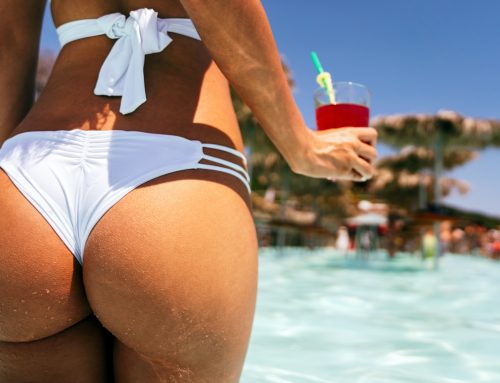Front teeth are highly visible and play an integral part of a smile. Their crevices and grooves make them vulnerable to cavities if oral hygiene practices are neglected, leading to gum disease which could loosen crowns or cause them to even fall out altogether.
Metal crowns made of nickel, chromium or gold are very resilient yet do not look natural in appearance. Porcelain-fused-to-metal crowns may provide more comfort, yet will need repairs or replacement eventually.
What Causes Front Teeth Loss?
Losing a front tooth as a child might have been seen as exciting rite of passage; as an adult it can be an ongoing health and smile concern. Luckily, there are numerous solutions for replacing missing or damaged front teeth.
Injury to the mouth is one of the primary causes of front tooth loss; accidents and sports injuries are both possible causes. But gum disease may also contribute to this situation by leading to bone loss and tooth decay resulting in the need for extraction of an affected tooth.
Genes can also play a part in the loss of front teeth. Children may inherit a condition known as hypodontia – congenitally missing tooth(s).
Once a tooth is knocked out, according to Cleveland Clinic research it may still be saved if placed back into its socket within five minutes. If possible, gently rinse it in cool water without soap before gently placing back in its socket with clean gauze or washcloth for support.
If you have lost a front tooth, seek dental attention immediately. Your dentist can offer temporary solutions such as dentures or bridges until permanent solutions such as implants or crowns become available; waiting too long could result in shifting of other teeth as well as problems in your bite.
Dental Implants
Dental implants have become the standard solution in general dentistry for replacing missing teeth. Implants look, feel and function just like natural teeth and make the ideal option for restoring any type of tooth – including front ones – including front ones that are missing. Furthermore, implants prevent bone loss that results from missing a tooth not being replaced and allow other ones to shift and fall out over time.
Replacing front teeth with implants requires a comprehensive clinical assessment in order to ascertain if they are the appropriate choice for you. This may involve taking X-rays and/or CT scans to assess your jawbone condition as well as surrounding teeth; in certain instances your dentist may perform bone grafting or sinus lift surgery to make sure there is enough space for their placement.
Patients looking into dental implants as a solution for missing front teeth must carefully consider their oral health when making this decision. At Jenkins Dental, our dental team will review both your medical history and current oral condition to make sure you’re an ideal candidate for implants; individuals with uncontrolled health issues that could compromise healing processes like diabetes, smoking, gum disease or certain medications are unlikely to qualify for this form of treatment.
Implants must integrate with your jaw bone for them to be successful, so your dentist must first prepare an area on your jawbone by opening and then exposing it through gum tissue. When this has taken place, an implant screw is placed into this space before finishing its restoration with a dental crown on top.
Dental implants provide the strongest, longest-term solution to replacing missing front teeth. You can use them either to restore just one missing tooth, or as part of a bridge to restore several. In both instances, you’ll get natural-looking and highly durable restoration that looks indistinguishable from natural smile.
Dental Bridges
Dental bridges can replace one or more missing front teeth. They use a false tooth called pontic that is supported by two crowns attached to healthy teeth on either side, and held in place by a metal framework often covered in porcelain. Your dentist or dental practitioner will choose an option that matches the natural color and texture of your natural teeth; such as porcelain fused to metal, all ceramic/porcelain material or gold alloy metal frameworks covered in porcelain for your crowns.
Bridges can also make your teeth appear more symmetrical by filling in any gaps left by missing teeth, improving your smile while making eating and speaking easier. Furthermore, bridges help prevent remaining teeth shifting into this space causing further issues and costly treatments to treat any potential future gaps between them.
Brush and floss regularly after taking out your dental bridge, and visit your dentist or dental practitioner for regular check-ups and cleanings. A floss threader may help facilitate flossing between your teeth and bridge so as to reduce bacteria build-up that could potentially lead to infections under it.
Missing front teeth can have a dramatic impact on speech. Pronouncing certain words might become challenging, and you could develop a lisp. To fix this problem, your dental team can offer Spring dental bridges – which will restore both appearance and confidence when eating and speaking.
A dental bridge can replace missing teeth and improve overall oral health. When teeth go missing, bone loss occurs in your jaw which could eventually result in jawbone recession; by adding a dental bridge you can prevent this process and increase overall facial structure and shape.
Dental bridges are an effective solution to missing front teeth. Your dentist will explain all of your available options for replacing them – dental implants and bridges alike – along with their advantages and disadvantages.
Crowns
Crowns (commonly referred to as “white caps”) are tooth-shaped restorations used to repair damage to teeth. Crowns come in various varieties that restore them back to their original shapes, sizes, colors and strengths; there are different benefits depending on a patient’s individual needs; porcelain crowns tend to blend in most naturally with your natural teeth while lasting slightly less long than other crowns – typically reserved for front teeth that don’t receive as much chewing or grinding action.
If you want a crown that lasts, porcelain-fused-to-metal crowns could be an ideal solution. These crowns boast a metal core which makes them stronger than porcelain alone, acid etched for strength and durability before layering of porcelain colored to match your natural teeth – this results in an aesthetic result while remaining lifelike and natural looking! However, one drawback of this type of crown may be its tendency for metal particles to sometimes show through.
This may not be as much of an issue when your crown is situated on back teeth that don’t experience much biting or chewing force, however this type of crown tends to be more costly than its counterparts.
Full metal crowns are the longest-wearing and most reliable type of dental crown, typically constructed from gold or other precious metals. They’re often reserved for molars that remain out of view and rarely clench or grind; unfortunately they’re also the most costly choice available.
If you notice a cavity in any of your front teeth, it’s crucial to visit a dentist right away. Left untreated, decay may spread to the roots and loosen them, potentially leading to gum disease and loss of other teeth. Luckily, cavities can often be prevented with proper oral hygiene practices like brushing twice daily and flossing daily as well as scheduled visits with your dentist for cleanings and examinations.
Disclaimer: The content on this blog is intended for general informational purposes only. It is not a substitute for professional medical advice, diagnosis, or treatment. Always consult qualified healthcare providers for personalized advice. Information regarding plastic surgery, dental treatment, hair transplant, and other medical procedures is educational and not a guarantee of results. We do not assume liability for actions taken based on blog content. Medical knowledge evolves; verify information and consult professionals. External links do not imply endorsement. By using this blog, you agree to these terms.





